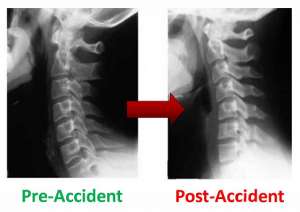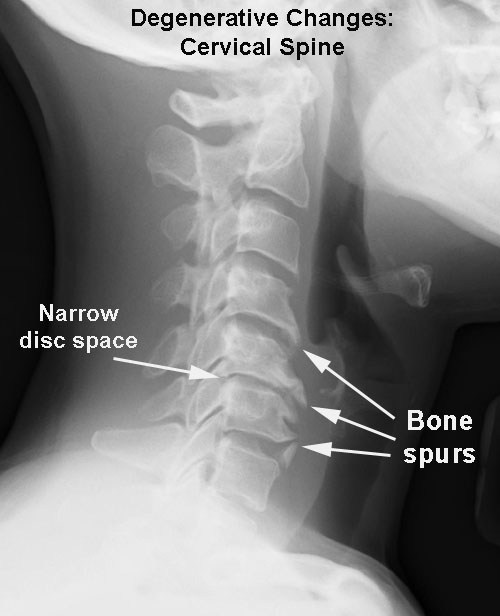Doc says I lost my curve in that accident.

When a chiropractor looks at an x-ray of a patient’s spine they are looking for clues in their quest to understand what happened to the patient’s spine and when and how did it happen. Sort of like a forensic scientist looks for clues when skeletal remains are found, much is revealed about a living spine in the same way. I often hear patients say that their MD looked at their neck x-rays and saw some degenerative change in the joint and disc spaces at the mid level of their spine. When the patients ask how or why did that happen, they are told that it is just the normal aging process. When I hear this, I immediately ask the patient why they think that the rest of their neck bones aren’t degenerated. If aging is normal, wouldn’t all of the bones be aging? The “normal aging” answer is an easy response for those doctors who may not have studied the spinal system as extensively as they would need to in order to give a more detailed explanation.

Auto accidents are notorious for leaving a clue that something bad must have happened. Let’s look at new accident injuries to previously uninjured spines versus old injuries that are showing up as degenerative changes years later.
Under normal circumstances, an uninjured 30 something -year- old neck should have a forward curve (lordosis) of about 60 degrees, when you consider the full functional bones and curve of the neck from a side view. The spine should also be straight up when looked at from a front to back view. If the curve is reduced or reversed in the side view or shifted to the left or right of center on the frontal view, then the chiropractor can assume that there has been trouble. If all of the disc spaces appear to be about the same height and there is no sign of arthritic change in the joints the chiropractor can assume that the loss of curve and alignment has occurred within the last seven years. The patient’s history now becomes the important issue. If the patient just had an auto accident with no other history of accidents, the chiropractor may assume that the loss of curve and misalignment is due to the accident. If the patient has a history of previous accidents it’s not so easy. If there is disc space thinning, bone spurring or joint whitening from arthritic change then the chiropractor can assume that there was another injury that occurred at least seven years prior to the accident that they are currently considering. The tricky part at this point is making sure that the symptoms such as pain and stiffness are due to the new injury and not the old injury. Of course there is always an overlap and the good doctor’s job is to properly assess for both.
Well, that about covers some of the things that can happen in an auto accident and why it is so important for the chiropractor to see an x-ray. Hope this is helpful to your understanding. You can read more on auto accidents at this link.
John E. Weisberg, D.C., F.I.C.P.A. | Seaside Wellness Center
